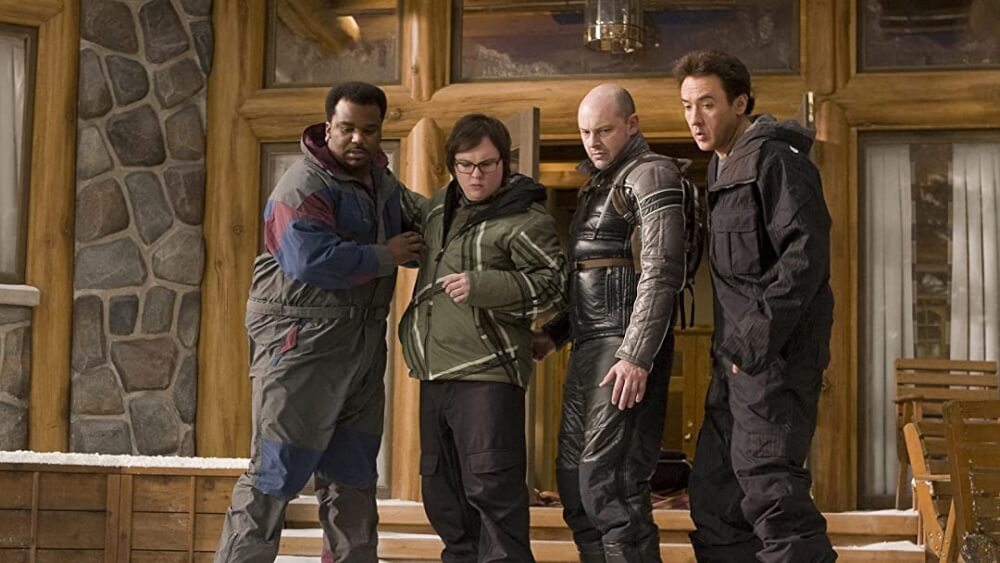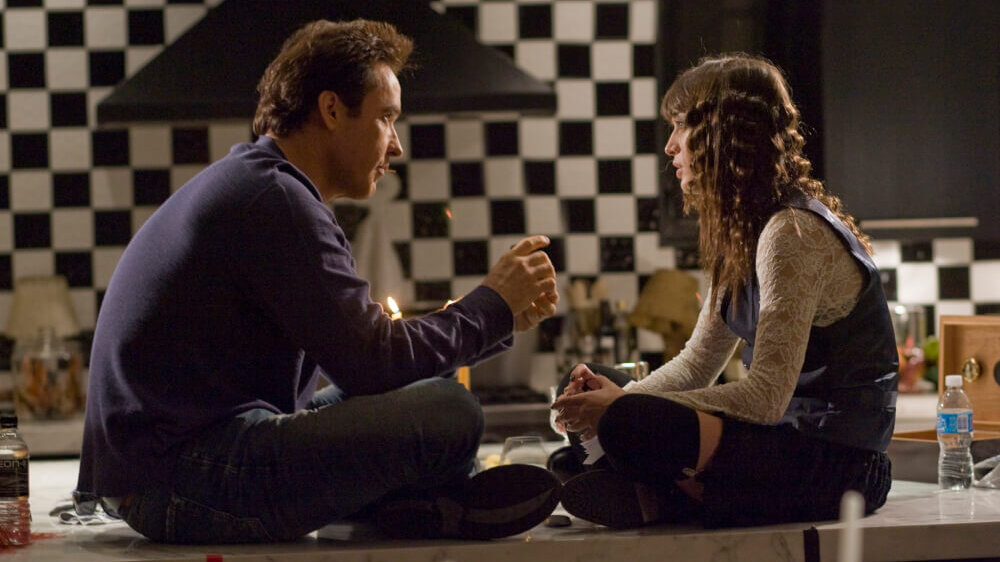
Okay, I’m doing it. Just don’t hurt them.
Hot Tub Time Machine. You could argue that Steve Pink’s 2010 comedy is just another silly, forgettable studio romp, but… arguing that would ultimately spell doom for the most believed people in my life. So instead, the argument that needs to be made is that the film is subtly a deep well of filmic auteurism that goes far deeper than its shallow-appearing surface would imply.
Yeah, it’s that, I guess.
The Destruction of History Through the Lens of Parody (Please Don’t Hurt Them)

“The most effective way to destroy people is to deny and obliterate their own understanding of their history,” said George Orwell. It’s a real quote. I’m not making it up. No I’m not! I’m not lying! Yes, I know what would happen if I’m making all this up, and I’m not! Be freakin cool! Just… let me keep going.
The Marxist schools of thought believe in competing interpretations of reality, creating an erasure of historicity. In the film, realistic historical significance gives way completely to the camp version of 1986 that writer Josh Heald uses as nothing more than a nostalgic backdrop for his sketch fest of a script. There is no looming threat of nuclear war, or Reaganism political tension. In fact, the movie is so devoid of real stakes that it’s very difficult to watch the whole thing without getting distracted thinking about the worries you have in real life. You know, like late car payments or, I don’t know, a lunatic throwing a knockout gas grenade into the middle of your daughter’s tenth birthday party and kidnapping her while you’re unconscious.
The “people” of this 1986 are robots programmed to only speak in rhythms that refer to the ten pop culture artifacts the movie’s creators want to reference. It’s a narrow focus that, despite the film’s comedic efforts, grows quite old. Something I hope my daughter still gets to do.
The movie’s own lack of historical context actually becomes quite interesting when the film’s resident young, modern character, portrayed by Clark Duke, exemplifies the exact type of nostalgic picking and choosing that the script is doing on a grander scale. He is given a full fish-out-of-water treatment, down to not understanding why teens of the ’80s don’t have cell phones. This self-awareness could make you think that Heald and Pink are self-satirizing their own art. It could also make you wonder how people of that era would have handled a ransom call without a burner, but that’s not relevant.
Alright, I’m over halfway done. Now put my wife on the phone. I’m clearly good for the rest of it. If you want to know the conclusion of this worthless exploration of a random raunch comedy you’re fixated on, then you’ll let me hear from Linda.
…
…
Okay, thank you.
…
Reframing Pop Culture to Implant False Nostalgia (You Don’t Have to Hold the Meat Cleaver in Your Other Hand While Holding the Phone Up to My Wife’s Ear)

The previous ideas are bubbled and then burst by arguably the film’s most interesting throughline, which is centered around maybe its second biggest draw (the first being “watch it or else,” of course): The casting of real-life ’80s movie star John Cusack. The idea of Cusack’s “character” literally reminiscing about his status during the ’80s cements the idea that reality is one big point of view that is, despite being based in historical truth, open to viewer interpretation.
I can tell by the fact that you’ve turned off the motor on that chainsaw that I’m starting to hook you. Good.

The film is littered with moments directly homaging Cusack’s real-life film career. He makes his way through set nods and visual pastiches reminiscent of many of the scenes people instantly picture when they talk about him in real life, with slight alterations taking place as he maneuvers through them. These are a ton of movies this film’s core younger audience likely haven’t even seen. Take my daughter, for example. She has never seen Say Anything or Better Off Dead, and yet I can almost guarantee that she would still be cracking up at Rob Cordry’s wild antics if she wasn’t bawling her eyes out in fear of being “turned into a Thanksgiving turkey.” It’s the end-all, be-all of the film’s obsession with exploring the elasticity of history both in the film’s story and the story of its very production.
What? No, I’m not waxing poetic. This is all in the subtext! Oh yeah? Huh, maybe you just aren’t as big a HTTM fan as you claim you are… oh, now you remember? Now you definitely were picking all of this up while watching? Sure. Well whatever, I’m doing my big finale paragraph. Stay away from Linda – she has problems with getting Stockholm syndrome and I don’t want to deal with that again this month.

The film as a whole exists as a giant fixation on the self, masquerading as a fun romp through yesteryear’s hits. It’s a giant representation of false memory, as we are all constantly trying to force our actual past into the made-up narrative that we want to be our backstory. It makes sense that the whole cast comes to their big final revelation looking into a mirror, as the film itself seems to be holding one up for all of us to be looking into.
…
Now please, I did what you want. It’s all there. I didn’t make any of it up. I watched the movie twice! Well, I watched it once then fast forwarded through it. Let my family go.
EDITOR’S NOTE: Walt was reunited with his family hours after this piece was published. Last we got word, he was looking forward to taking them on a nice vacation to the Bahamas to let this whole thing blow over.
EDITOR’S NOTE NOTE: Bahamian cartels have demanded an article explaining the metafiction of A Shark’s Tail.
